#alter gursky
Text
Landscape: Presentation
What is a landscape? A large open scenery of any place.
"All the visible features of an area of land, often considered in terms of their aesthetic appeal." - Google definition
"Landscape' means an area, as perceived by people, whose character is the result of the action and interaction of natural and / or human factors". - European Landscape Convention, 2000
Why might humans be drawn to making landscapes?
Capture a moment you've experience through travelling
Preserving an image of nature and compare through time
Documentary
Aesthetic and the serenity qualities pull people in
What kind of camera equipment would you use for landscape photography and why?
A high quality camera for ultimate image quality
Wide angle lens, such as a 17-35mm perhaps, to be able to perfectly capture the large open space
Tripod
Extra batteries and SD cards as you could be travelling quite far and remain a long time without a chance to charge them.
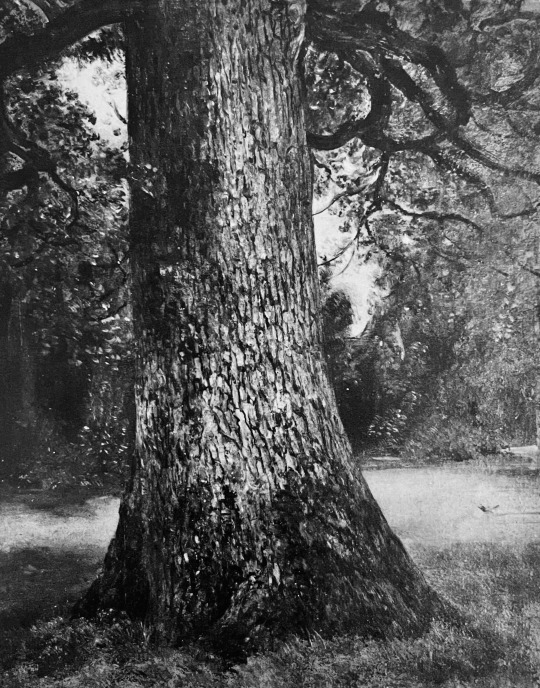
John Constable - Study of the Trunk of an Elm Tree 1821
Photography and its ability to capture detail initially took over both the role and aesthetics of what painters were doing, which led some to began exploring abstract ways.
Ansel Adams:
A prominent environmental activist and nature lover showed how amazing landscape photography could be through his skills and patience to wait for the perfect weather condition to shoot a location. He loved to show the scale of mountains in his work by having the horizon line really high up in the photographs, as well as "the atmosphere interacting with the landscape". Highlighting all the natural textures of the world is also a big part of his work. His unique style of having such stark contrast and interesting lighting really brings the landscape to life in his work. He shoots only on medium and large format cameras, on narrow appertures from f.2 - f.64 to get as much sharp details possible. In the dark rooms, he often spends hours dodging and burning his image to bring out the contrast by using an enlarger (light source) and a print with the original negative from the camera in between and developing it on to the print paper. Huge emphasis on visualisation: seeing it before shooting to show what you seen instead of what the camera see.
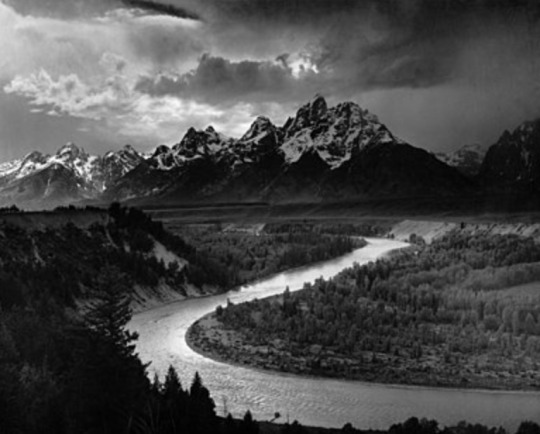
Topographic:
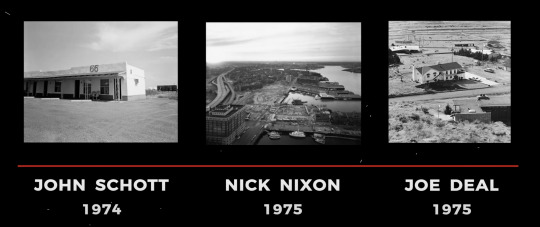
In the 70s, landscape photography reinvented itself. This new way of visualising landscape was pioneered by these 10 photographers, who had their work displayed collectively under the title New topographic: Photographs of a man altered landscape to highlight humanity in nature. Very straight shooting aesthetic with dull lighting at times, sharp lines, centre framing and lifeless. Showcasing the interaction of human and non human environment. This style of images also helps push conversations to protect nature.
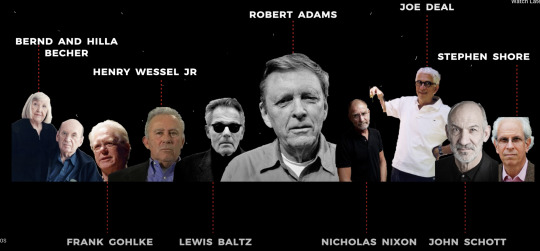
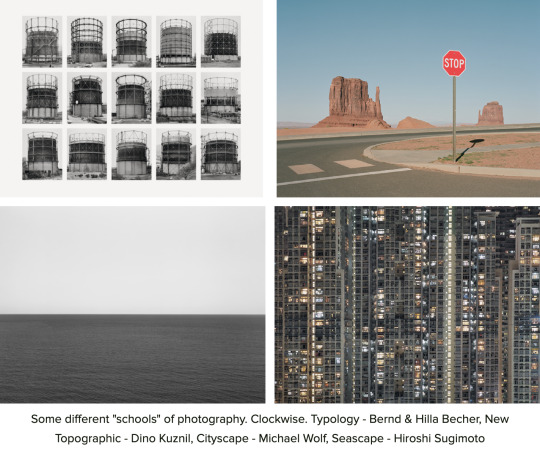
Contemporary landscape photographs continues to show us interesting ways of viewing landscape with more installations, collages and intervention on print surfaces as a craving for more was found in some photographers.
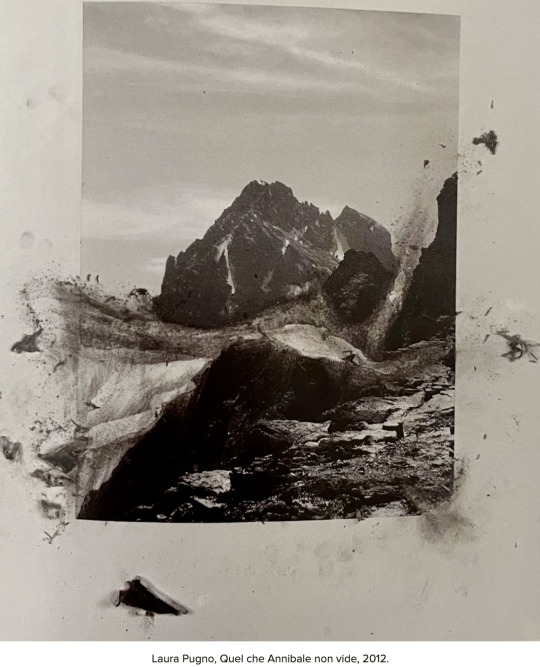
Below is a image from the artist Andreas Gursky called "Rhein II". How much do you think it sold for?

Sold for 4,338,500 dollars and is one of the most expensive photograph sold at an auction.
PROJECT: LANDSCAPE INTERUPTED.
Your task is to produce two images. One image taking the approach of the "New Topographic" photographers and one where you make an intervention into the landscape - either physically or in post production.
0 notes
Text
Please use the sharing tools found via the share button at the top or side of articles. Copying articles to share with others is a breach of FT.com T&Cs and Copyright Policy. Email [email protected] to buy additional rights. Subscribers may share up to 10 or 20 articles per month using the gift article service. More information can be found at https://www.ft.com/tour.
https://www.ft.com/content/2d52904c-f592-11e7-88f7-5465a6ce1a00
Monika Sprüth, his dealer, told me that in the weeks after the auction she’d instructed her staff to avoid speaking about it to journalists. “I mean, the moment your work is not discussed because of its ideas or its content . . . If you are constantly the artist who is the most expensive photographer all the time . . . There are some artists who probably like it, like Damien Hirst. But Andreas wasn’t prepared, and it was pressure, yes, and it is still a pressure today, in a way.”
It’s not something Gursky wants to discuss much when we meet at his Düsseldorf studio. “The whole market situation was a topic that might have been important to me [once],” he says. “What matters is now, and the fact that I made some money back then is what permits me to be completely free and independent in my work now.” The “now” is very much in evidence in these surroundings, where he’s tending to an immaculate scale model of London’s Hayward Gallery, which reopens after two years’ refurbishment with a major retrospective of his work later this month
Please use the sharing tools found via the share button at the top or side of articles. Copying articles to share with others is a breach of FT.com T&Cs and Copyright Policy. Email [email protected] to buy additional rights. Subscribers may share up to 10 or 20 articles per month using the gift article service. More information can be found at https://www.ft.com/tour.
https://www.ft.com/content/2d52904c-f592-11e7-88f7-5465a6ce1a00
Digital technology,” he adds, “gives me a lot of possibilities and freedom to work. When I did my straight photographs in the 1980s, it was really tough to find those images. You can’t find a location like Salerno on any [old] day. Because I didn’t know what I was looking for. It was just by chance that I found that image. But once you have made one like that, you look for similar locations and you start to repeat yourself and it becomes more difficult. So now I have [many more] possibilities.
“For example, I’m working on an image, which is not in the exhibition, which shows the construction of an ocean liner. This is a subject that exists in the world. Millions of people have seen it. And I have an idea of how to show it: it sounds simple if I say it — the size of the boat is so big that our imagination is not strong enough to [encompass] it. But I have a conceptual idea to show this boat in a way you haven’t seen it. If I was still working in analogue, if I didn’t have the abilities to alter or construct images, then I couldn’t make such pictures, because in this case it will be more invention.”
.
0 notes
Text
Fotograf Andreas Gursky wird 67
Fotograf Andreas Gursky wird 67
Deutschlands bekannter Kunstfotograf Andreas Gursky hat Geburtstag.
Weltweit werden die Fotos des in Düsseldorf lebenden Fotografen in Einzelausstellungen gezeigt.
Seine „Fotografie“ das Bild „Rhein II“, aus dem Jahr 1999, wurde in New York, im Rahmen der Chriestie`s-Auktion „Post-War Contemporary“ zum Rekordpreis von 4,3 Millionen Dollar versteigert. Es gehört so zu den bis dato teuersten…
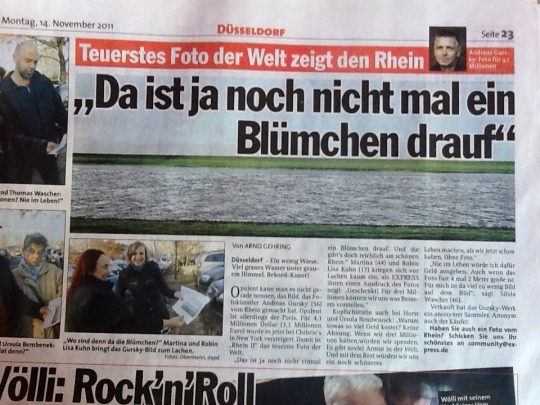
View On WordPress
#alter gursky#Andreas Gursky#art#bekannter fotograf#bekannter Fotograf Deutschland#Duesseldorf#Fotoausstellung#Fotograf#Fotograf Duesseldorf#Fotografie#Fotografie-Freund#Fotograph#Kunst#Kunst Fotograf#Kunstakademie#Kunstakademie-Duesseldorf#Kunstpalast#Museum#NRW#NRW-Forum#People#Photographer#Photographer German#photography#Photos#Robert Freund#Sothebys#Starfotograf#teuerste-foto#vernissage
1 note
·
View note
Text
Class Activity #2
1) Photographer today
Related photos from documentary:
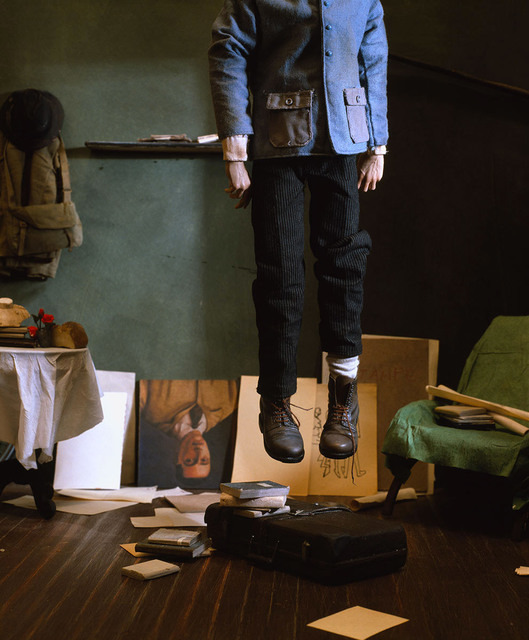
Paolo Ventura exchanged real moments and models with plastic ones, in order to recreate the moment in a rather unconventional way.
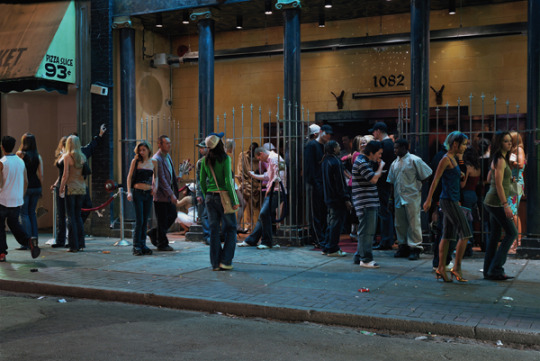
Jeff Wall turned photographs into extremely large scales that allow us to feel more connected to it, as the figures in it are the same size as us.
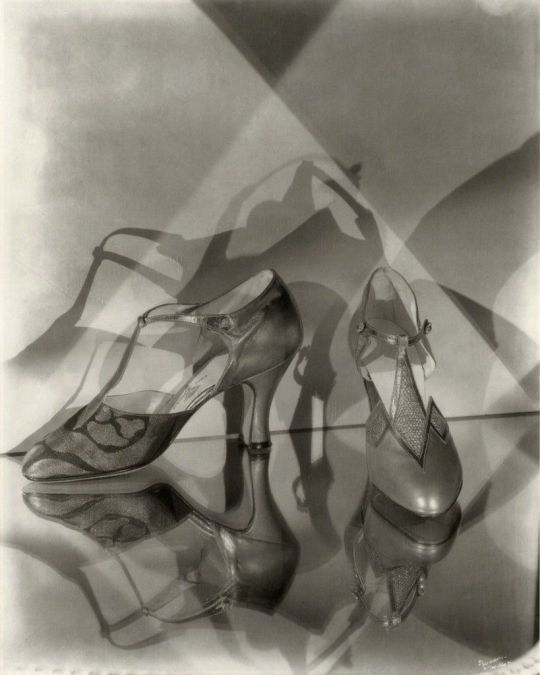
Edward Steichen used photography as commercial work that later got jumped from being in magazines to galleries.
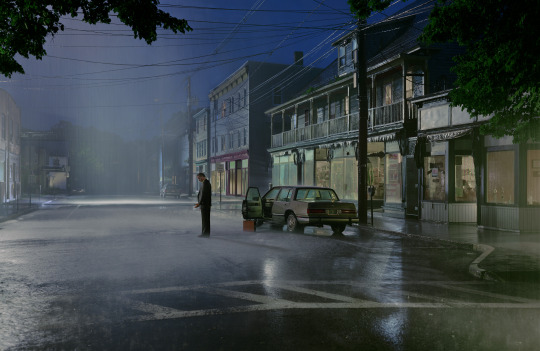
Gregory Crewdson used photography in constructing everything in a photo by staging it, as if he is setting up a movie.

Andreas Gursky used technology as a tool to manipulate and alter the photographs to the composition in his mind.
3 notes
·
View notes
Text
youtube
Ben Gursky and Jake on this hip hop banger!
I had been working on this one and dropped it on soundcloud, spotify, apple music etc.
Lyrics
[Chorus: Ben Gursky]
I just don't have (have) any self control (control)
I just don't have (nah I don't f**king have) any type of hold
My thoughts run wild (they been running wild)
There's no where to go (nope)
There's no where to go (nuh uh)
No where to f**king go
[Verse: Ben Gursky]
Clark Kent alter ego
Superman superhero
Champion of the people
Ain't no equal
On my second life
First try wasn't living right
I'm the prodigy no one's stopping me
In my own lane
Going through my own pain
Shrooms THC and LSD
Yeah we're mother f**king on three
Stepping on the gas smoking on the grass
[Chorus: Ben Gursky]
I just don't have (have) any self control (control)
I just don't have (nah I don't f**king have) any type of hold
My thoughts run wild (they been running wild)
There's no where to go (nope)
There's no where to go (nuh uh)
No where to f**king go
[Verse: Ben Gursky]
Half sheet LSD nothing left to lose
Down shifting in the foreign coupe
Mind racing better regroup
I'm on a whole different f**king level
I'm the dude that outwit the f**king devil
Go ahead and check your f**king mental
Don't be toxic haters obnoxious
I got this
[Chorus Ben Gursky]
I just don't have (have) any self control (control)
I just don't have (nah I don't f**king have) any type of hold
My thoughts run wild (they been running wild)
There's no where to go (nope)
There's no where to go (nuh uh)
No where to f**king go
[Verse: Ben Gursky]
I don't have any self control
I don't have any type of hold (no type of hold)
My thoughts be running wild (wild)
There's no where to go
No where to go no where to go no where to go (go)
Are we ever really in control (control)
We may never know
Drugs really take a toll
On my mind body and soul
[Verse: Jake]
Jake spitting hot
Call it boil
Especially when I'm sipping on that crown royal
It got me losing all type of self control
Know these moments never dull
Truth being told
Had these dreams since i was a child
Ni***s smoking mid
It smell like black and milds
Listen to the music get a special feeling
S/o to the fans in new Zealand
Put your hands up to the fucking ceiling
[Verse: Ben Gursky]
I just don't have any self control
I just don't have any type of hold
My thoughts run wild
They be running wild
There's no where to go
There's no where to go
No where to f**king go
[Outro: Ben Gursky]
Go
Control
Cold
No control
No where to go
Zagan Gang
#zagangang#arizona#phoenix#musicislife#musicproduction#spotify#youtube#soundcloud#imgur#izotope#hiphopmusic#hiphop#hip hop#no#control#no control#jake
3 notes
·
View notes
Text
Current Trends
Photo Merge Techniques
Whilst this technique is more commonly recognised in the vast panoramic landscapes of Artist such as Andreas Gursky (1) and Edward Bartynsky (2) I didn’t go for a panorama , but chose instead to try a multilayer HDR image for my painting with light image.
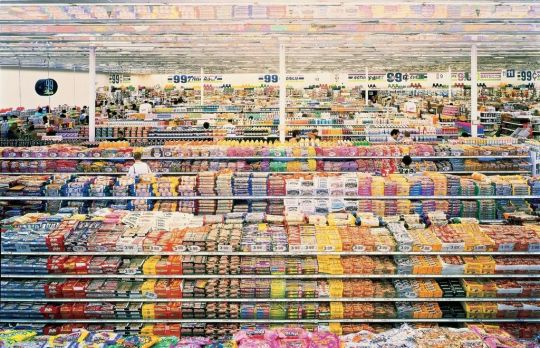

https://www.youtube.com/watch?v=fuxvndtVUwM
Artist such as Harold Ross use this technique and it is a quick alternative to Layering and Masking in photoshop, however it does reduce the amount of control the photographer has.
First of all I edited the images I thought would best suit my composite picture, I didn’t alter them in any way.

Once I had identified them I moved them into the develop phase and selected “Merge HDR” , the programme then took over and after a few attempts where I kept or discarded some of the images, I had the finished photo.
It was surprisingly simple but I think I would prefer to put the work in by using a layering technique to get exactly what I am looking for in future.

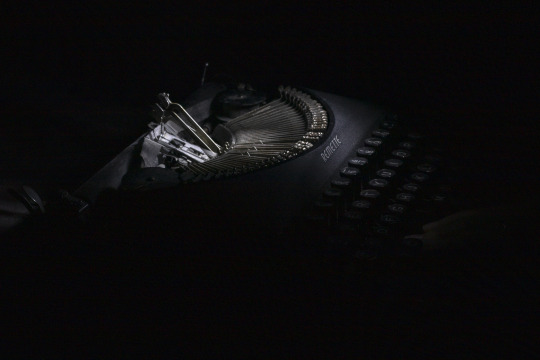
4 notes
·
View notes
Text
7 - Dusseldorf School of Photography - The Becher’s and their influence
Rejection of ‘expressive imagery’
Since photography’s invention in the mid 19th century the ways photographs were initially taken changed rapidly.
Initially the camera technology available was large format plate cameras, (daguerrotypes, calotypes, wet plate cameras etc.) which meant that the act of image making was a slow process which required extensive and sustained concentration on ones’ subject matter, often with long exposures (in some cases in excess of 15+ minutes). The use of tripods and extreme attention to compositional details was therefore necessary.
However the end of the 19th Century lead to rapid shifts in the style of photography thanks to the development of gelatine based film which replaced the much slower, and more expensive technique of exposing images onto single plates.
George Eastman and the Kodak company were the first to utilise this new technology, designing first the 1888 ‘Kodak box camera’ and later the 1900 ‘box brownie’, which produced the first instantaneous ‘snapshot’ images. The eventually lead to Leica designing the first 35mm SLR, a revolutionary camera design which has dominated photography up to today (modern day (full frame) DSLRs/mirrorless cameras have the same design as SLRs with the exception of using a 35mm digital sensor instead of 35mm film roll).
19th century photography, for example of the likes of John Thompson, Eugene Agtet and Lewis Hine, emphasised the careful and considered recording of space and surrounding, done so in a pre-planned and methodical manner. However a new style of image making emerged with 35mm cameras. Images in an instant and the ability to shoot immediately after the previous exposure ‘sped-up’ the process of image making rapidly and it became more about responding to ones surrounding based on instinct, trying capturing the essence of events the moment they unfolded.
Work of the Bechers’ and their influences
This style of photo-journalistical expressive image making dominated photography for the next 50 years. However in the 1970s, things based to change. A group of conceptually minded photographers based in America began reverting back to the use large format photography, using the camera as a device to strategically record the urban landscape. These photographers all compiled work together in the now legendary 1976 exhibition entitled "New Topographics: Photographs of a Man-Altered Landscape".
Perhaps the most well known and influential of these artists was the only European photographers included in the exhibition, collaborative husband and wife team Bernd and Hilla Becher. The Bechers’ work within the context of the time was revolutionary, strategically documenting industrial architecture in grids known as ‘typologies’. They worked in an ultra scientific manner, controlling everything from the alignment of the camera, lighting, camera position, exposure time, length from subject etc., everything had to be exact (really good rules to follow for architectural photography). Their style had a huge influence on the practice of photography. Whilst classic photojournalism remained and does so today, the work of the Bechers’ and similar practitioners paved the way for a far more conceptual approach to documenting the world.
Aside from photographing themselves, the Bechers’ also taught Photography at the Dusseldorf School of Art. Their students include world renowned photographers such as Andreas Gursky, Canadia Hoffer, Thomas Ruff and Thomas Struth (already researched). The rules the Bechers’ set themselves also applied to the practices of their students, classically only photographing on dull, overcast days with no sunlight.


Overview of how the Bechers’ impacted photography
Instrumental in reviving use of 8 x 10 large format cameras
Emphasised formal approach to image making
Ensured realistic style of images - “we try to arrange these shapes and render them comparable”
Consistently and precision - taking the element of ‘chance’ out of the equation
Seeing in an highly objective manner - letting the subject ‘speak for itself’
How does this relate to architectural photography and my project?
Although never practicing ‘commercial’ architectural photographs, the Bechers’ dedicated their whole career to documenting architectural structures.
I find their whole philosophy very interesting. They took attention to detail and strategic execution to the extreme. Their approach to photographing is all about reading the environment carefully and responding with the incredibly realistic rendering of images, probably the most use attribute that an architectural photographer can have. There is a reason for every aspect of their image making process, everything is done with a calculated purpose.
This highly detailed and scientific approach to image making is something I want to try out to an extent in this module so that I start thinking a lot more about how and am taking my photographs and actively pre-meditating how I will conceive my images. I want to really ‘slow-down’ my process, emphasising quality of thought and application over quantity.
1 note
·
View note
Text
Week One - Monday
Practitioner Precedent Videos
Mark Adams
Colonisation
Landscapes
Placement of camera/photographer is very important
Different views - time
Different conditions- light
Transformation
Andrew Gursky
Interest in how people behave as groups
Uses photography as a way of trying to understand how the world fits together by giving you an entire world in one image
Photography is a real-world reference but can be mixed with a fictional reference
‘Pictures are more intelligent than we are’ more going on in an image that humans can ever grasp
His images often look abstract from far away until you go up close and can start to pick out the details
Always printed very large in galleries to make the viewer stand far away and look at it there and then move closer to get a different perspective from all of the details
Trevor Paglen - Bloom
An exhibition about mourning and being alive in a moment of fragility in the world
Built on a series of flowers and plants in bloom, high res cameras, imported into AI algorithms that alter the images
Flowers are a reminder of the fragility of life
Sculpture “Standard Head” in the middle of the exhibition
We are in the rise of facial recognition/AI
Features research that was done to help AI understand handwriting, high schoolers wrote out the constitution of the US.
Dislocatedness - video cameras set up throughout the exhibition, if you view it online you can choose what camera you want to look from. There is also an option when you go on the website to allow your webcam to get used, if chosen yes your image is projected onto monitors set up in the exhibition, allowing people viewing it in real life to watch you watching the exhibition.
Hank Willis Thomas - Unbranded
Conceptual artist
Creates idea or concept and stages the work
Uses advertisement to talk about things that advertisement can’t talk about
Living in a state of branded consciousness - language of imagery
We value ourselves in relation to commerce, commercial products imply something about our value
Turned a photo of a family members funeral into a statement about the value of life, prices of caskets = love of that person
Takes away the text of famous ads to allow them to take on a whole new meaning
Jae Hoon Lee
Maker of 2 vast famous landscapes
Disorienting images, rocks come towards you and they appear slipping
Likes to engage with visual textures of landscapes
Beyond the normal territory
People look at it and think they might know the location but then become disoriented
Focuses on small area and then photoshops images together of the area - visual transformation
The detail makes it look like a painting
Ann Shelton - Jane Says
Looks at histories of plants that have been used to control the female body eg one can bring on menstruation and one can end a pregnancy
She has had to grow a lot herself as they aren’t always available at nurseries
Interested in how the body of work connects to feminist discourse and feminisms and the histroies of how women have made art and practiced art in a domestic space
Uses studio space as a domestic space
Still life photography
Minimalism and peering back nature
The work questions society controlling women’s bodies and how they move through the world
Thinks about the Me Too movement and figures like Trump and Weinstein and how the female body is caught in a difficult and violent moment
Interested in manipulation of female body and youth
Sometimes uses performance
0 notes
Text
Press release—Andreas Gursky at Gagosian Rome
NOVEMBER 15, 2017
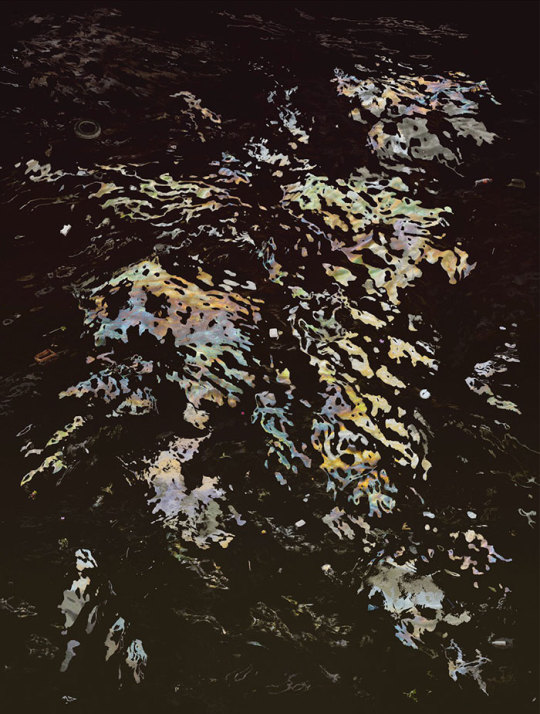
ANDREAS GURSKY
BANGKOK
Opening reception:
Thursday, December 14, 6–8PM
December 14, 2017–March 2, 2018
Via Francesco Crispi 16
00187 Rome
Since the photographic medium has been digitized, a fixed definition of the term “photography” has become impossible. When I started my work, I felt that I would always be dependent on the physical world. It seemed that it was more interesting to be a painter working in the studio, where one can decide what to do, how to develop the compositions. I am not a painter, but I have the same freedom now.
—Andreas Gursky
Gagosian is pleased to present photographs by Andreas Gursky, on view for the first time in Italy. Featuring works from the Bangkok series (2011), as well as the monumental Ocean VI (2010), the exhibition coincides with the tenth anniversary of the Rome gallery.
Gursky has demonstrated that a photographer can make or construct—rather than simply take—photographs about modern life and produce them on the scale of epic painting. Just as history painters of previous centuries found their subjects in the realities of everyday life, he finds inspiration in his own spontaneous visual experience and through reports of global phenomena in the daily media. From initially using the computer as a retouching tool, he began exploring its transformative potential, sometimes combining elements of multiple shots of the same subject into an intricate yet seamless whole, at other times barely altering the image at all. The resulting pictures have a formal congruence deriving from a bold and edgy dialogue between photography and painting, representation and abstraction. Over time his subjects have expanded to map and distill the emergent patterns and symmetries of a globalized world with its consensual flows and grids of data and people, architecture, and mass spectacle. In pursuit of his aim to create “an encyclopedia of life,” Gursky’s worldview fuses the perpetual motion of existence with the stillness of metaphysical reflection.
CONTINUE READING...
#Andreas Gursky#Andreas#Gursky#Bangkok#press release#Gagosian#Gagosian Gallery#Larry Gagosian#photography#photograph#photographer#art#contemporary art#exhibition#Rome#Gagosian Rome#Roma#Gagosian Roma#Italy
14 notes
·
View notes
Text
Nadav Kander - The Meeting
210220
Nadav Kander (Born 1961) is the first photographer that I cite in conversation about which practitioner has influenced me the most. He was born in Tel Aviv and based in London, although he does not regard himself to be British. His photographs are a part of the collections at the National Portrait Gallery and Victoria and Albert Museum.
Kander began taking pictures at 13 years old with a Pentax camera. In the South African Air Force, he processed film and printed aerial photographs. In 1986, he moved to London where he currently resides with his wife and three children. Portraiture and landscape photography are the main genres that he is best known. I have an appreciation for the consistency in his career, which has traversed 30 years across fine art and commercial platforms. He has photographed celebrities, models and a multitude of other sitters. In 2009, his 52 portraits published in The New York Times Magazine portrayed President Barack Obama and his closest associates. It is the largest portfolio of work that the publication has ever showcased. Later that year, Kander was awarded the prestigious Prix Pictet Earth for Yangtze - The Long River (2008). The shortlist of nominees included Ed Kashi, Andreas Gursky and Naoya Hatakeyama. The list of his other awards is extensive and includes a World Press Photo Award 2013 and 2014, Honorary Fellowship from The Royal Photographic Society 2015 and Outstanding Contribution to Photography from Sony World Photography 2019. (Lens Culture, 2020)
During the World Press Photo Exhibition 2014 at the Southbank Centre, London, I was particularly taken by Kander’s 3rd Prize entry of actor Chiwetel Ejiofor. The photograph first appeared in New York Magazine as a staged portrait to commemorate the British actor. Ejiofor, played a black man kidnapped in 19th Century America and sold into the slave trade in the film 12 Years a Slave (2013). He received an Oscar nomination for the role and won Best Actor at the BAFTA awards. Actors have a trained ability to respond to a camera. He appears poised yet relaxed. Kander’s characteristic turquoise key light is apparent with a red back light to highlight the outline of the sitter. The lack of a fill light leaves a proportionate amount of this face in an enigmatic shadow. This low-key lighting design gives the photograph a sombre tone. Emphasis is placed upon Ejiofor’s eyes, which reveals the complexity of his role in the film. As a viewer of the work in person, I felt a closer affinity to the subject when it was close to life sized. Its considered forms had a significant presence akin to a drawing, painting or sculpture. (World Press Photo, 2020)
The Meeting (2019) is a book that acts as a homage to Kander’s career, with photography from his early foray into the genre to illustrious works recognised within the fine art and academic communities. The annotations add insightful anecdotes about each piece and the man himself. The opening, entitled ‘The Triangle’ outlines a relationship of personal interest to me between sitter, photographer and viewer.
‘I don’t photograph to tell stories. I photograph to make stories. The viewer, if they hold their gaze long enough, becomes the author of the work’s meaning.
Consider there’s a metaphorical suitcase packed with white, grey and darker clothing that we carry around with us wherever we go. When we meet someone, we choose what items to show; maybe only clean white shirts, perhaps darker one. This unpacking is symbolic of a meeting. Much like when I work with a sitter. Our stories collide and change depending on the day, the weather, our emotional states.
If I manage to make a portrait that stirs a viewer then they complete what I call ‘The Triangle’ by bringing their own story or state of mind to the picture. This is fundamental to me, but often missed or misunderstood, because photography is still considered by many to be a record of an event. It is that; but it is not only that. How can it be?
Perhaps if we replace the word ‘photographer’ with ‘poet’ the point becomes clear. It is accepted wisdom when it comes to poetry that every individual reader finds his or her own meaning in the poem and this perspective is unique - no more less valid that yours or mine. The same, in my view, is true of photography.’
In email correspondence between 4th and 28th April 2019 with David Campany, Kander describes his photographic process. These extracts resonated with me as a practitioner of portraiture and landscape photography.
NK - I’ve walked down one road since I started photographing when I was 13. I feel I haven’t deviated at all. I still need my work to strike the same chords in me that I’ve always longed and striven for. My photographs (however varied a viewer might find them) come from the same inner place. I seem to revisit a slowed-down reality, which is very beautiful and important to me. Slow, quiet and slightly uneasy, alluding to more going on beneath what you first see. The subconscious need to express what feels meaningful and profound never goes away. I just try many ways to revisit it, to come at it from different directions.
DC - The portraits you’ve made seem to have quite a special place in your work. As if a face, or a person, is a way to get to the tension between surface and depth. I feel the human face is somehow already an image before it’s photographed. It’s already a kind of presentation, or representation of the self, although a very fragile and elusive one.
NK - That is beautifully put! Yes, my photographs of people are an essential part of my practice.
They follow on from my photographing landscape. When first dealing with landscape I realised it wasn’t the natural environment I was after, but the man-altered landscape. I focused on a darker nature, our destructive ambivalence to our surroundings, but I shrouded these scenes in beauty using compositions that, purely from their form, colour and weight, would have an effect on me apart from the information shown.
DC - Portraiture is often thought of as a two-way exchange, between photographer and sitter, but you’ve talked often of the viewer being crucial to meaning. That said, there’s a real intimacy to your portraits, as if these people have been given the freedom to forget their audience momentarily. We viewers can look, without feeling we’re being performed to. Is this how it is?
NK - I’ve had to think a long time about your question. Much of what I do is intuitive so finding the words is difficult. When I’m in front of a person (or a landscape for that matter), there’s nothing in my head that matters. I’m just looking with so much concentration that sometimes it feels as if I might explode. I do not want to be stirred so badly! All I want is for something to show itself, something that if I release the shutter will become an image that will stir me and unsettle me. To get close to this I must direct people very softly, subtly, and create the appropriate light so that they experience something of themselves. Any frivolous act for the viewer will never work; it would appear transparent. It has to be just for them and me. Only once this is successful does the viewer enter and make up the triangle. Artist, subject and viewer - each one a part of the whole.
From beneath the surface beauty, comes an existential call that touches on questions of destiny and the unknown. The works of Hans Bellmer, Man Ray, Raoul Hausmann, Dalí and Hans (Jean) Arp have also had a big influence on me. Although my work is not surreal, the feeling I get from the work of these artists is something I always search for. For example Jean Arp’s sculptures were very informative when I began photographing the nudes that became the series ‘Bodies - 6 Women, 1 Man’.
DC - It’s interesting that you put it that way. Very often I find myself wondering what landscapes your sitters were in just before they came to you, what it was - out there in the world - that is on their mind as you make the photograph.
NK - A portrait is one way of looking at some facets of our condition. There’s a precious and beautiful flicker of understanding, or the opposite, that shows itself for short periods and disappears. These periods, which I must see and try to photograph, are often responses to the light or the atmosphere that the light imbues. I must try to recognise them as an image that has what I love; depth of feeling, vulnerability and poise, pride and soul, a recognition of something more than just this moment now. Little of this clear to me, but this is the best I can do to explain it. (Kander, 2020)
Summary
It is an inevitability that a photographer emulates their heroes. Whenever I read that someone like Kander also had starting points for their practice, I am encouraged. I have covered in detail the practitioners that have inspired me for this project - Smith, Andrew, Refn, Sigel and Norwood. There are blog posts committed to each of them. However, I felt that Kander required more substantial meditation. There are parallels between his voice and my own - low key lighting and moody colour saturation delivered with a quiet temperament. He reveals that these attributes are the reflection of triangles that he forms between himself, his sitter and viewer. A sitter may choose to present themselves in any number of ways to his lens then this narrative is open for further interpretation by anyone that encounters his imagery. During his interview with Campany, he explains that he implements soft direction, free of frivolity to search for each photograph. He also explains a slow and quietened reality that he occupies beneath the surface appearance of what he sees.
The Ejiofor portrait inspired me during a formative stage of my photography. There is overlap with the other photographers and cinematographers that I have mentioned. Low key lighting is a continuous theme; however, Kander’s renderings have more depth. He is reluctant for media attention and I found The Meeting (2019) to be highly enlightening. His is the work of a ‘poet’ acting as a ‘photographer’, to use his own metaphor. As an analytical student, I have attempted to dissect what makes Kander, Kander. An awareness of his process is just the beginning. My lighting will resemble his, in addition my direction style is already collaborative instead of dictatorial. Any additional intricacies are unique to his voice. As I develop as a photographer myself, I am hopeful to have as reputable career and recognition. There are plenty more triangles that I am eager to construct.
Bibliography
Kander, N. (2019). The Meeting. London: Steidl
Lens Culture (2020). Biography. Lens Culture. Available from
www.lensculture.com/nadav-kander
[Accessed 10/04/2020]
World Press Photo (2020). 2014 Photo Contest. World Press Photo. Available from
www.worldpressphoto.org/collection/photo/2014/29789/1/2014-Nadav-Kander-PS3
[Accessed 10/04/2020]
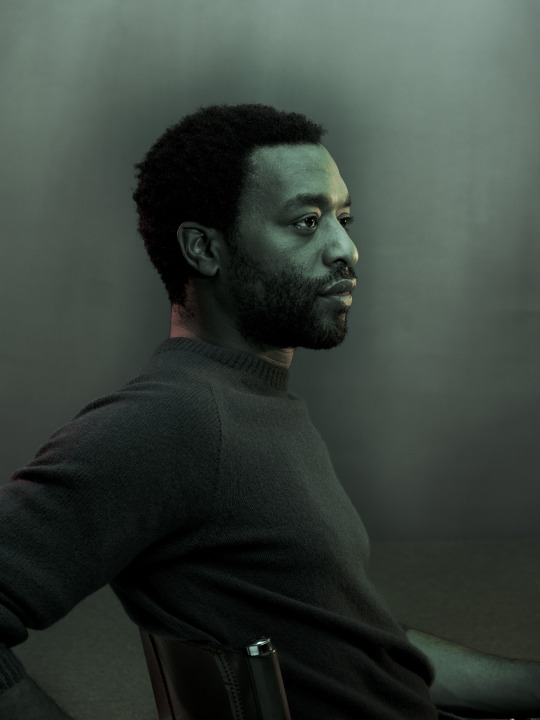
Nadav Kander, Chiwetel Ejiofor, 2014
0 notes
Photo

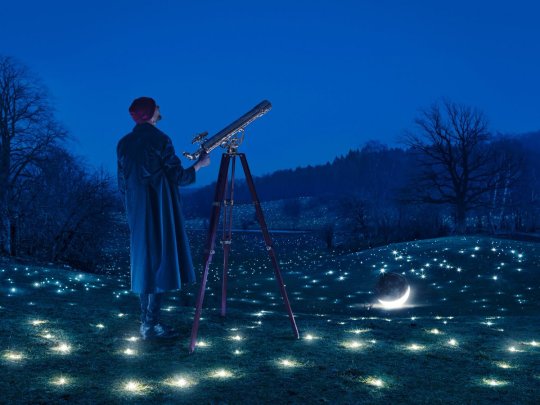
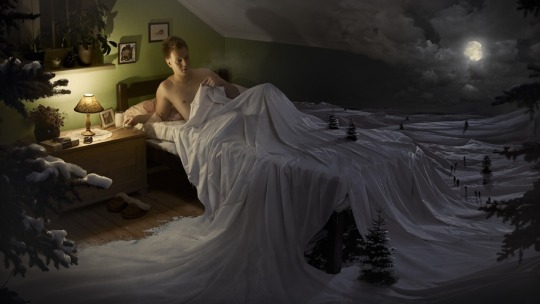
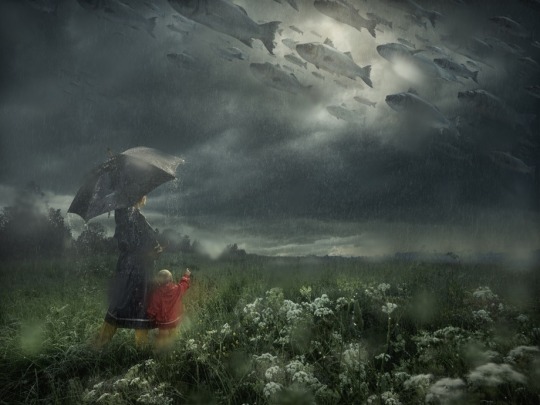
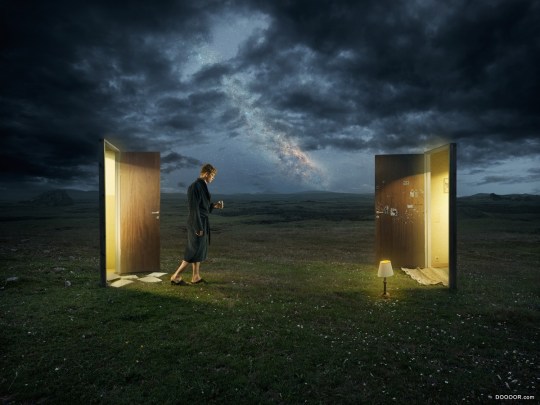
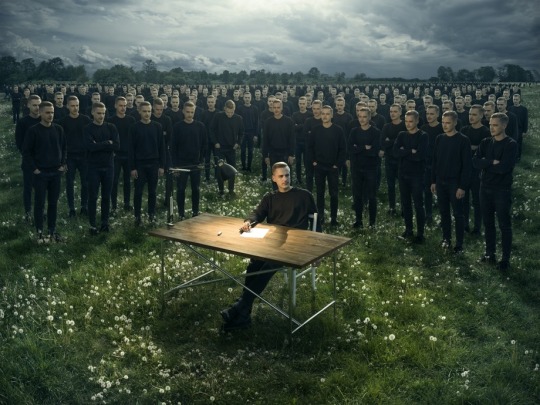
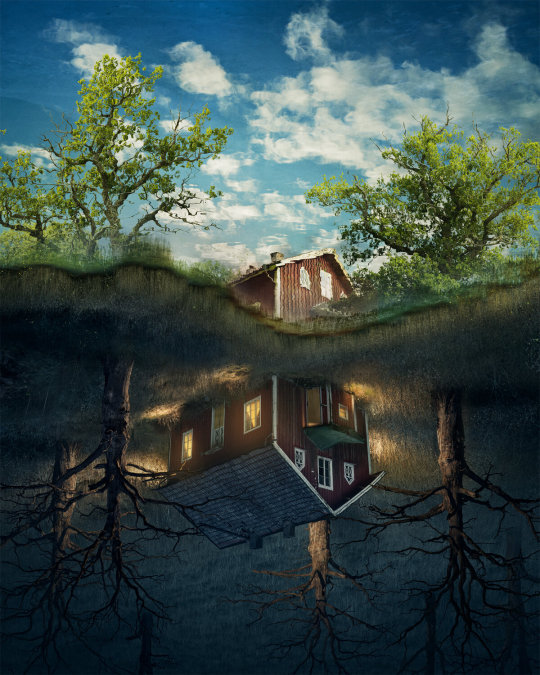
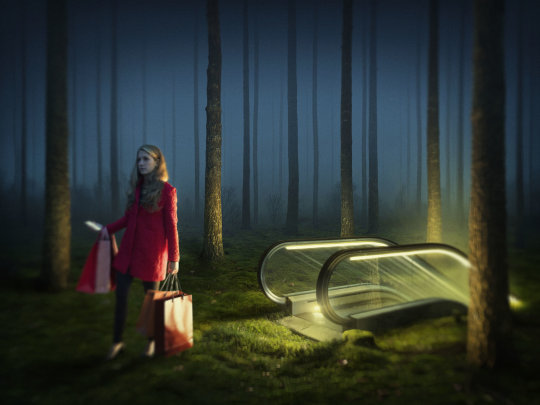
As I am trying to create the surreal landscapes from my dreams for my project, and compositing generally, I am looking at Erik Johansson. His work struck me anyway last week when I researched the surreal, generally. Apart from being seemless optical illusions, they are generally saying something (which is often in the subtitle). About the environment, history, the human condition or humankind generally. And this was my fear with the surreal, it can often come off cheesy and have no purpose in the art world. Johansson’s isn’t, and does. The illusory, reflections, blur multiple & long exposure have been a large part of my practice, with themes of isolation, loss, impermanence and human condition, do Johansson’s work also helps me situate, or contextualise my practice. Erik says he just couldn’t make the work he wants to make if not for this process. It is just easier for him to create his own landscapes digitally. His processes are often documented and included on his website. I also watched a TED talk by him about his process, generally. I feel he is actually very generous about his process and learned a few key things about making plausible ‘impossible’ images. His work is highly planned, like Gursky, nothing is accidental here. It is kind of the opposite of street photography, documentary or even landscape photography. Sketches are an important part of his process. The creation of most images ends with the pressing of the trigger (well, this is a bit of simplification, but I guess he means you can’t alter the content of the image after this), but his images start with pressing of the trigger.
0 notes
Photo

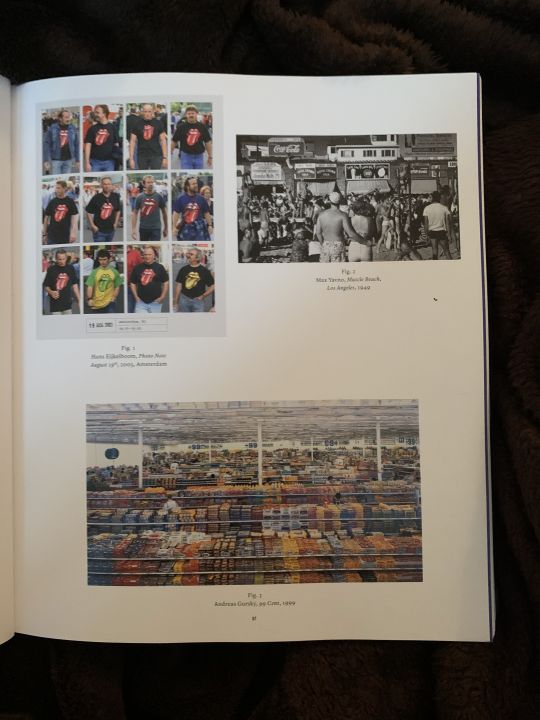
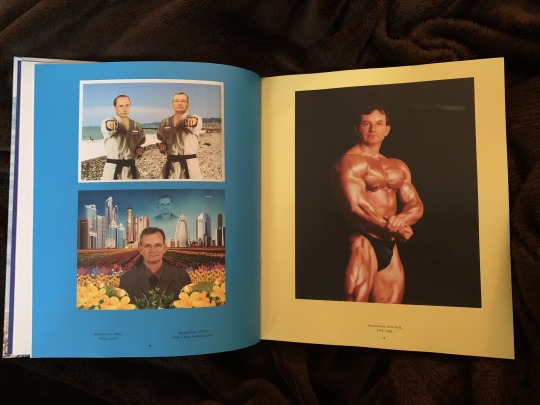
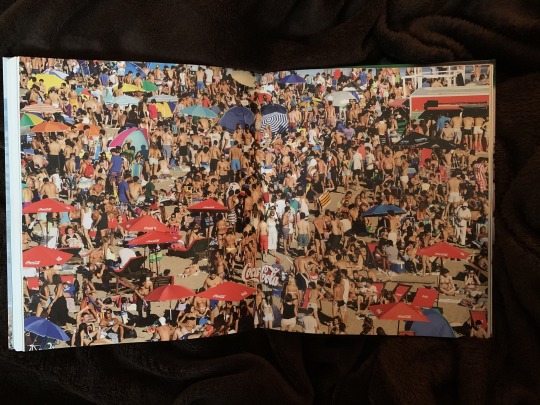
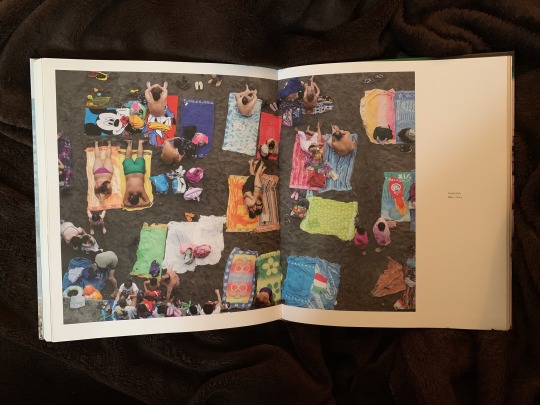
only human - martin parr
i’m already familiar with martin parr’s work from second year and thought back to his work while i’ve been thinking about looking at photography in my project
his photographs reflect subjects like class // identity // individualism // belonging // what is is to be british etc // its so easy to identify a martin parr photograph - “he’s altered the way we see the world” // he is known for his overly saturated satirical or humorous documentary photography
shows comparison between gursky and parr’s work - “if gursky presents a kind of sterile corporate fantasy of economic success, Parr shows us the individual swept up within it’s reality”
parr’s work has involved shopping // selling touching on the connection between consumer culture and identity - the idea that ‘we are what we have’ - an idea concluded by theorist Russel Belk
Britain, and more particularly, the lives, habitats and peculiarities of ordinary britons, is the subject with which Parr is most often identified, and the subject he has revisited consistently throughout his career.
0 notes
Photo

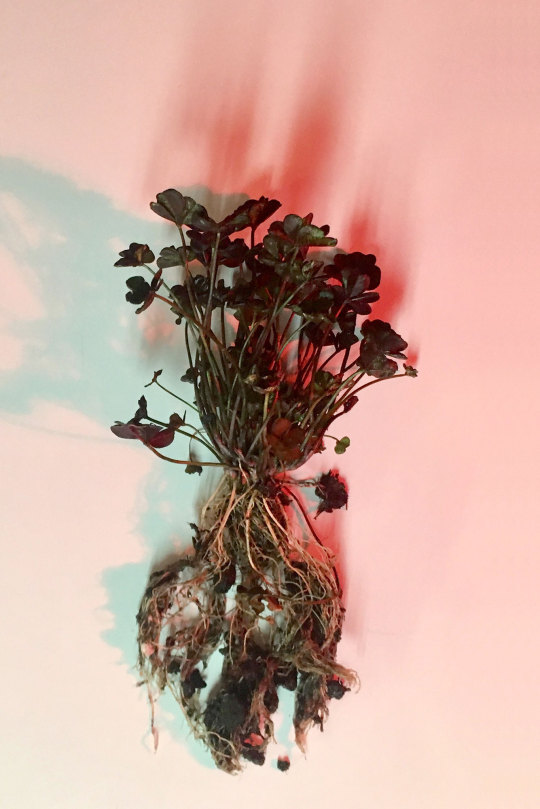
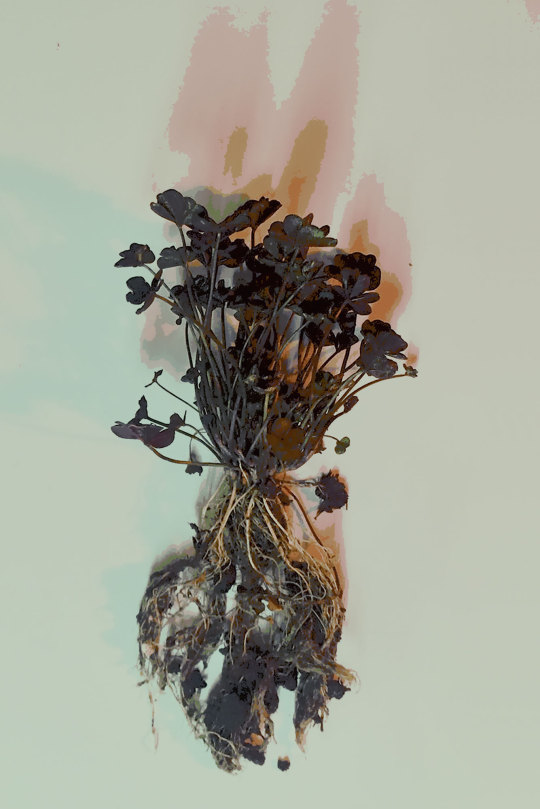
La Vérité Déguisée - The Truth in Disguise
November 1st to November 30th, 2019
Lundi 4 novembre 2019, 18h-22h
The Truth in Disguise, has many facets. The image can be a pretense in the conceptual or physical sense. One can alter, arrange, conceal, camouflage, recompose, counterfeit, dress, cover, decorate, disfigure, deform, denature, disillusion, conceal, coat, wrap, distort, invent, manipulate, collage, redact, silence, transform, veil ... the «reality» of objects, situations, people and ways of seeing. How can our perceptions be affected by techniques that hide or alter?
In the era of reality TV and false information, the selfie culture and the virtual identities of social media and gaming, artificial intelligence and political propaganda, how is the truth disguised or revealed?
Visual media of 20+ artists including: Idris Khan, The Mariwai Project, Christer Strömholm, Laia Abril, Naomi B. Cook, Nicole Cohen, John Stezaker, Yuken Teruya, Joan Fontcuberta, Tom Lovelace, Andreas Gursky, Sebastiaan Bremer, David Young, C. Javier Barrera, Marina Abramovič & Ulay
__
Napoleon’s Clin d’oeil (2019) jacquard thread, 66 x 87cm
GESTE PARIS: https://www.gesteparis.com/exhibitions
0 notes
Photo
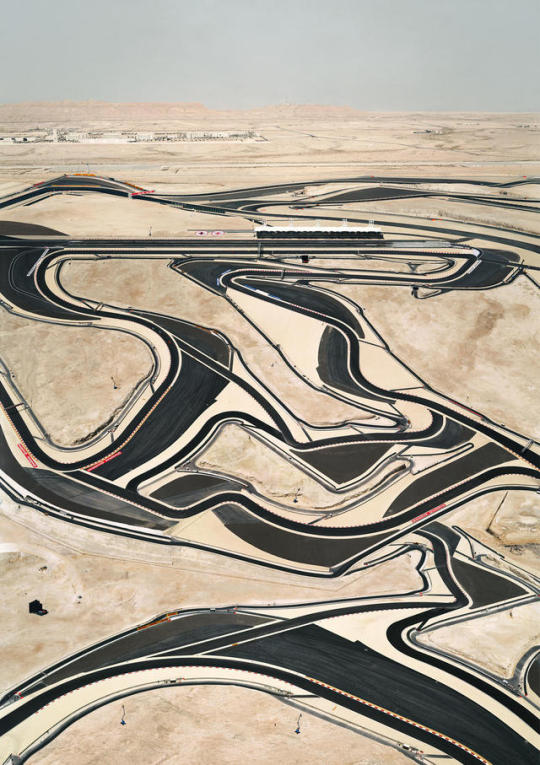

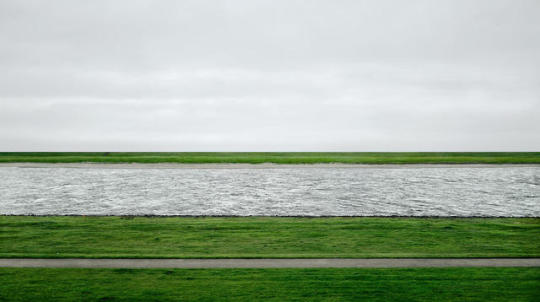
Andreas Gursky
Bahrain I 2005
Paris, Montparnasse 1993
Rhine II 1999
Lately I’ve felt constricted by the limits imposed by my need to be technically perfect as well as my stubbornness to not alter my images due in part to my hands on process of working in the field of analog photography. I’ve prided myself on capturing reality as it is, unaltered, without realising that I had pushed myself into a corner. This has led to a constant struggle with content, structure and meaning. Andreas Gursky casts doubt on these preconceived ideas about how photographs might represent reality and what the subject matter really is by playing with the tension within the medium’s representational mode and its capacity for abstraction.
This is achieved through several techniques. Firstly, his work explores a democratic view - by eliminating hierarchy every element within the frame has equal importance. The viewer then is unsure of where to direct their gaze. In addition, the large format scale of his art allows the viewer to speculate and engage with every aspect he presents in detail. He employs formal abstract qualities to create a double vision - his images alternately appear abstract or representational depending on the viewer’s distance to the picture plane. Furthermore, he creates a sense of endlessness in his compositions - we are made aware that the content surpasses the limits of the frame, thus creating a dialogue between the visible and the unseen. This brings our attention back to the medium of photography itself - time and space continue well beyond the snippet of reality we witness snapped by the shutter.
I am unsure if it is my background in street and documentary photography that has restricted my beliefs, but his work has helped me realise that photography as a medium isn’t just a means for documenting the world around me. It is a means for understanding how aspects of the world are ordered. In ‘Paris Montparnasse’ for example, he isn’t merely showing us the many different lives that exist in the apartments, but rather he presents the architecture as a means of organising and framing human behaviour. The architecture frames our perception, just as much as the image is framed by the camera’s viewfinder.
This back and forth notion of drawing our attention towards the medium of photography is what I am most intrigued by. He makes us question if what we see is really an objective reflection of reality or whether it has been digitally manipulated. This in turn makes us think of the artificiality of the digital age and the evolution of digital photography. But is it wrong that it has been altered? He is not restricted by the ‘rules’ of photography. There are no rules..... He has simply embraced digital technology and the endless new possibilities it affords.
0 notes
Text
Presenting Image (Term 2) Week 8: Workshop
Focusing on the following artists: Luke Willis Thompson/Thomas Ruff.
Looking at different installation strategies they employ when exhibiting work.
Luke Willis Thompson (NZ/FJ)
Thompson, works across a range of mediums, including performance, sculpture and film, all of which allow him to push the limitations of object and space.
Luke of Fijian and European descent, frequently deals with the social implications of the ready-made – drawing from the biographical to inform his curatorial decision-making. His work summons racial and class based discourse and is provocative in its physicality yet there is an elusive reasoning behind his choices and an ambiguity regarding the role of the audience and the artist. Luke’s work is not only challenging for the viewer but it also sets a precedent for the institution of art – questioning agency of the artist and responsibility of the audience to create context within a work. http://www.tautai.org/artist/luke-willis-thompson/
(1) Luke Willis Thompson - Sucu Mate/Born Dead (2016)
Extracting sacred artifact from natural environment/re-installing in a controlled environment.
Isolating the object to amplify power and meaning.
Minimalistic. Repetition. Diagonal formation.
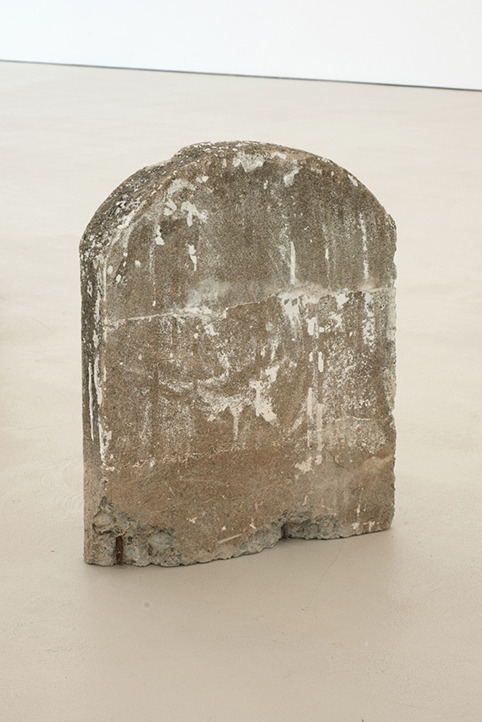

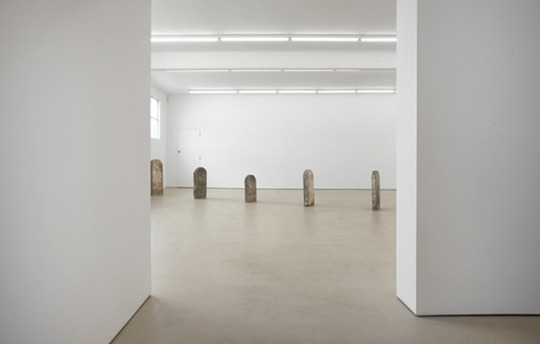
Luke Willis Thompson - “Inthisholeonthisislandwhereiam” Winner of the Walters Prize (2014)
Thompson’s winning piece takes the form of a journey beginning in the exhibition spaces at the Auckland Art Gallery. It is an unusual and remarkable work that was described by Walters judge Charles Esche as an ‘extraordinary intrusion of art into daily life that cuts through the protocols of the exhibition system like a knife.’(ocula.com/magazine/conversations/luke-willis-thompson)
The work has a kind of tri-fold structure. It consists of the ferrying of audience members in a prepaid taxi from an emptied gallery or museum, through a choreographed route of the city, and arriving at a villa, that is lived in, but temporarily shared as an artwork. The work allows for an indeterminate amount of time to look through the house and its contents and the taxi will take you back to the gallery when you decide its ready to leave.
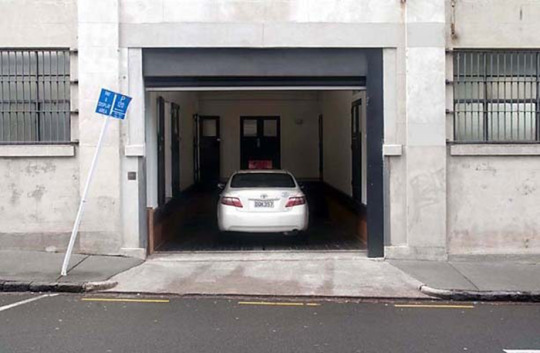

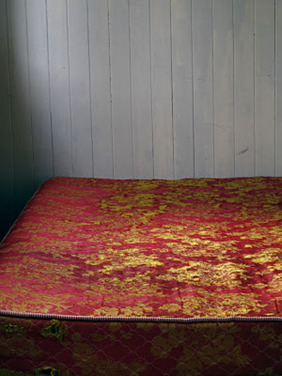
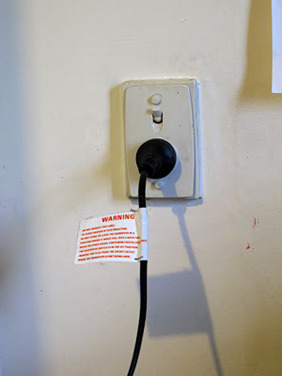
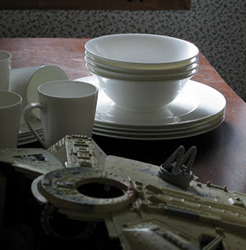

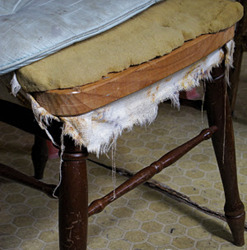
Exists in both tangible and intangible forms.
Exhibition as an immersive/Interactive experience.
Visceral/Emotive.
Viewer invited to engage.
Filtered view of reality.
Ambiguous as to the construction/Installation method/poses questions. Has it been deconstructed/reconstructed to create a fictional space of narrative and mythology?
Autoportrait (2017) - Luke Willis Thompson
(Turner Prize nomination for this particular work).
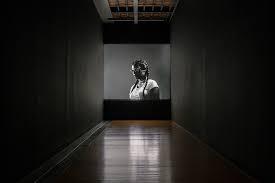
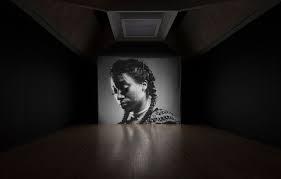
Shot in 35mm, the black-and-white film shows the face of a silent Diamond Reynolds, who broadcast live on Facebook in the moments after her boyfriend, Philando Castile, was fatally shot by police in Minnesota in 2016.
Thompson has transformed the long corridors and towering ceilings of the gallery’s space into a lightless, almost airless vacuum. Partly necessitated by the artist’s cinematic medium, this blackness causes a sharp alteration of the senses. It makes us physically aware of invisibility and silence, which carry immense thematic weight in Thompson’s work.
His exhibition is comprised of three silent and visually understated films. While the scenes are staged as photographic portraits, they are captured as moving images, a technique referred to by the exhibition’s curator, Stephen Cleland, as “durational” portraiture.
The probing camera risks intrusion, yet manages intimacy. It is unwavering and foregrounds slight involuntary movements of habit and impulse; subtle flickers of restlessness, defiance, melancholy, suspicion, serenity, sobriety and self-awareness reveal a full spectrum of emotion in the subjects, despite the simple compositions.
Mute, without context and leisurely in pace, the work invites contemplation from its audience. It is unexpected then, when reading the short descriptions provided by Thompson, to have the work’s subjects placed within the lineage and legacy of war and police brutality.
Subjects Jone Lebanon, Rosi Lebanon, Rupeni Iraq and Inia Sinai of How Long? (2018), Brandon and Graeme of Cemetery of Uniforms and Liveries (2016) and Diamond Reynolds of Autoportrait (2017) are all in some way—whether directly witnessed or inherited— affected by violence.
In this way, Thompson transforms the ways in which we might usually encounter violence and brutality in art and media. The usual carnage, chaos and symbolic blemishes of red are a distant notion, here supplanted by a haunting sense of lasting trauma that is material, personal, immediate and embodied.
(2) Thomas Ruff
Thomas Ruff is a German photographer who lives and works in Düsseldorf, Germany. He has been described as “a master of edited and reimagined image.
m.a.r.s Exhibition
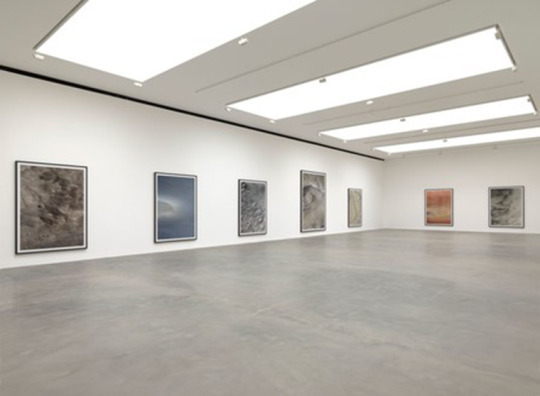
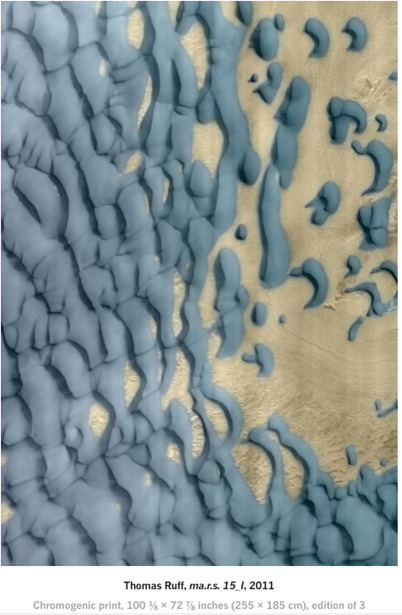
Alteration and manipulation. 3 D effect software. Reproduces large scale prints from satellite photographs.
Collages and renders.
Becomes an abstraction through partial isolation of the image.
Uses linear rows of square prints - different ratios/sizes.
Framed.
Hung low to the ground allowing viewer to engage and move into the work.
Use of large images to further engage the audience.
Portrait (Stoya) 1986

Portrait 1986 (Stoya) is a large colour photograph by the German artist Thomas Ruff depicting a young man, shown from the front and gazing out towards the viewer. The man’s head and shoulders fill most of the frame, and his features are set in a neutral arrangement. Although his hair is styled and he wears a deep yellow shirt and striped set of braces, the pale background, the blank expression and the even, flat tones in the image reveal little about the personality of the sitter. Tate’s version of Portrait 1986 (Stoya) is numbered two in an edition of four.
The works in the Portraits series are each identical in size and feature a young male or female sitter presented against a white background and staring out towards the viewer with a blank expression. Each was made using a standardised technique: the sitters, who were all friends and colleagues of Ruff, were positioned before a large format camera that was mounted on a tripod and covered in a black cloth. Ruff composed each scene using the inverted image that appeared on the camera’s focusing screen, after which he inserted a film holder containing the photographic plate, closed the camera, set the shutter, re-covered the camera with the black cloth and took the photograph.
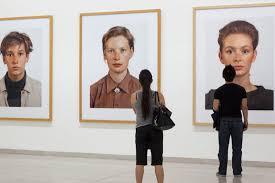
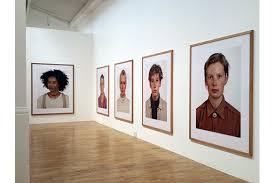
Ruff was among a generation of artists including Thomas Struth and Andreas Gursky who studied under the German photographers Bernd and Hilla Becher at the Düsseldorf Kunstakademie in the 1970s and 1980s. The work made by artists of this generation reflected the documentary objectivity – the use of even lighting, frontal presentation and the repetitive, serial format for exploring a subject – that characterised the Bechers’ photography, a style that was itself influenced by the 1920s German realist tradition of Neue Sachlichkeit or ‘New Objectivity’ painting and photography. Ruff stated in 1997 that ‘I have an idea of an image, but I can’t find the image because it doesn’t exist yet. So I have to make it myself’, and his Portraits, which act as both representations of individuals and standardised records of faces and bodies, could therefore be considered a reflection on the truth value of the photographic portrait (Ruff in Centre national de la photographie 1997, p.19). As Ruff explained in 1989:
I don’t believe we can still make portraits in the conventional sense of ‘representing a personality’ today. At least I don’t claim to do that. Which is why I imitate portraits. Nonetheless, there is still a great deal of reality in my portraits.
(Quoted in Thomas Ruff: Works 1979–2011, exhibition catalogue, Haus der Kunst, Munich 2012, p.26.)
0 notes
Photo

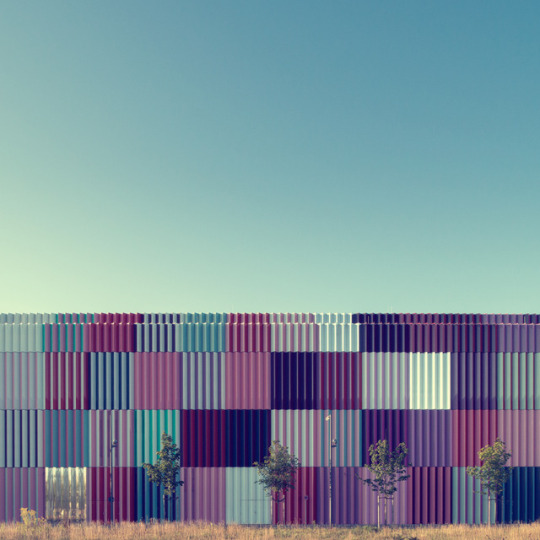

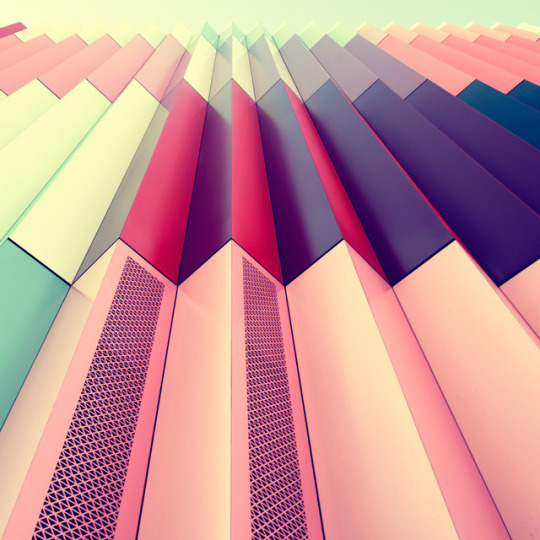
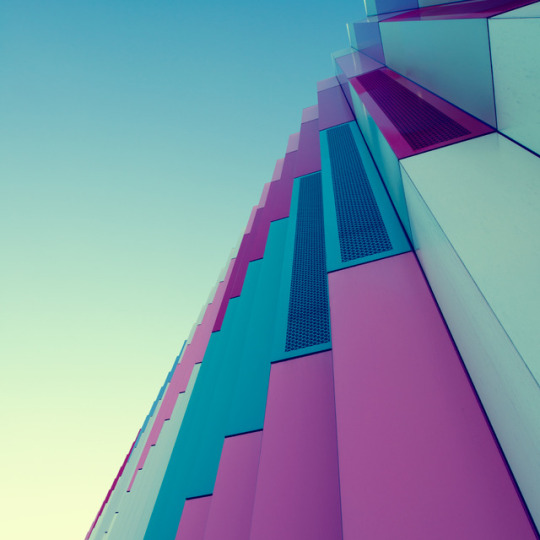
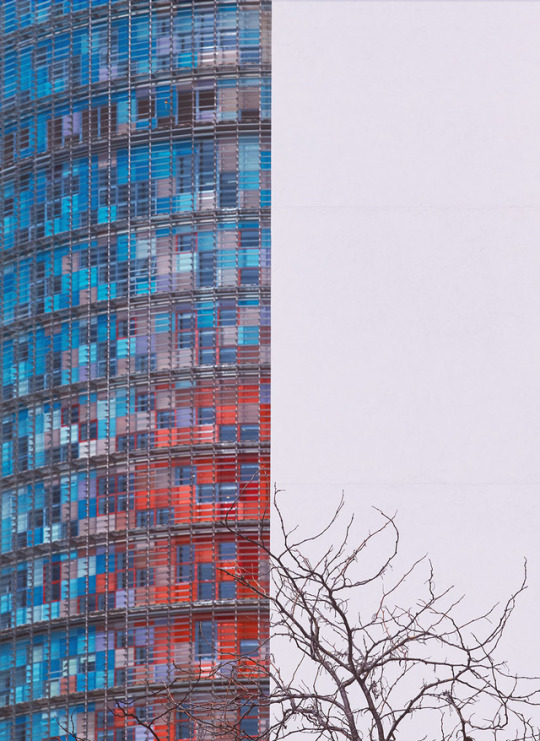
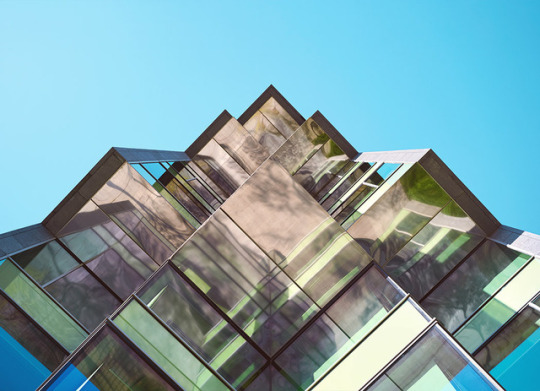
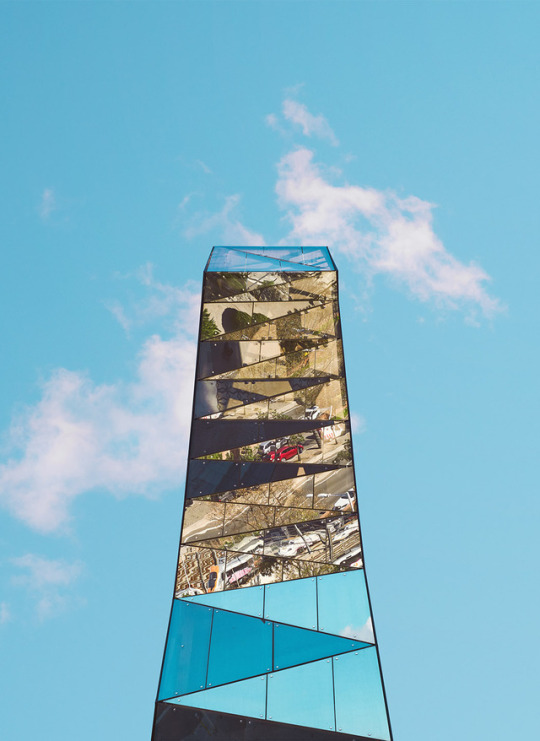

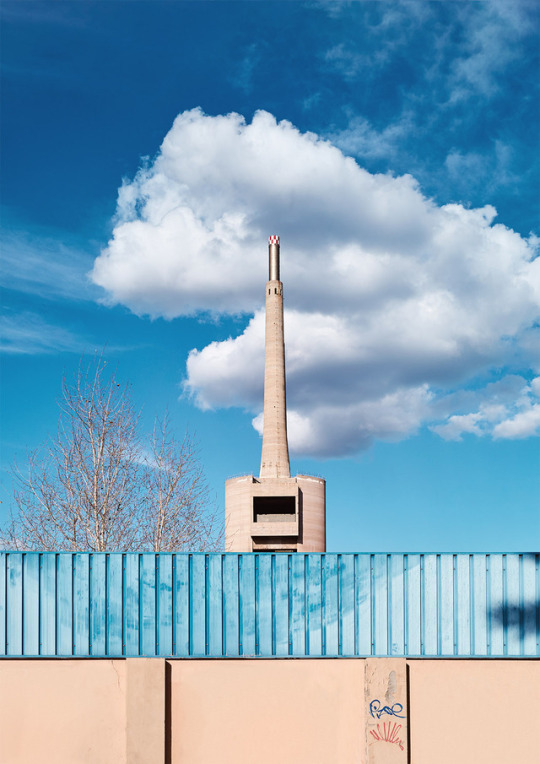
Nick Frank, ‘Mira’ & ‘The things I like’, 2012 - 2016
This series of ‘Mira’ and ‘The things I like’ works take by Fine Art Photographer Nick Frank who captures the beauty of some of the world’s most famous architectural spaces. With his unique sense of detail, he created striking architectural visual representations of buildings that almost look like surrealist paintings. Especially, the ‘Mira’ series showcases colorful patterns, repetitive forms and the straight lines of these buildings. He tries to confront objects with an unusual perspective giving them a whole new perspective that explores urban architecture around him in Munich. Also, Andreas Gursky work is one of his favorites and his works are inspired by his Professor Bernd Becher.
Nick Frank said: “Creativity, in my opinion, is cross thinking. While it is utterly hard to create something completely new (especially in photography), you can still interpret things in different ways, exercising your own vision by altering sizes and colors, twisting it around all together or combining it with something else. Creativity means thinking beyond the norm and looking behind something. Also being creative can be an attitude.”
http://www.nickfrank.de/free
https://www.behance.net/nickfrank
https://www.worldphoto.org/blogs/28-02-17/reality-designed-us-nick-frank-2017-swpa
0 notes